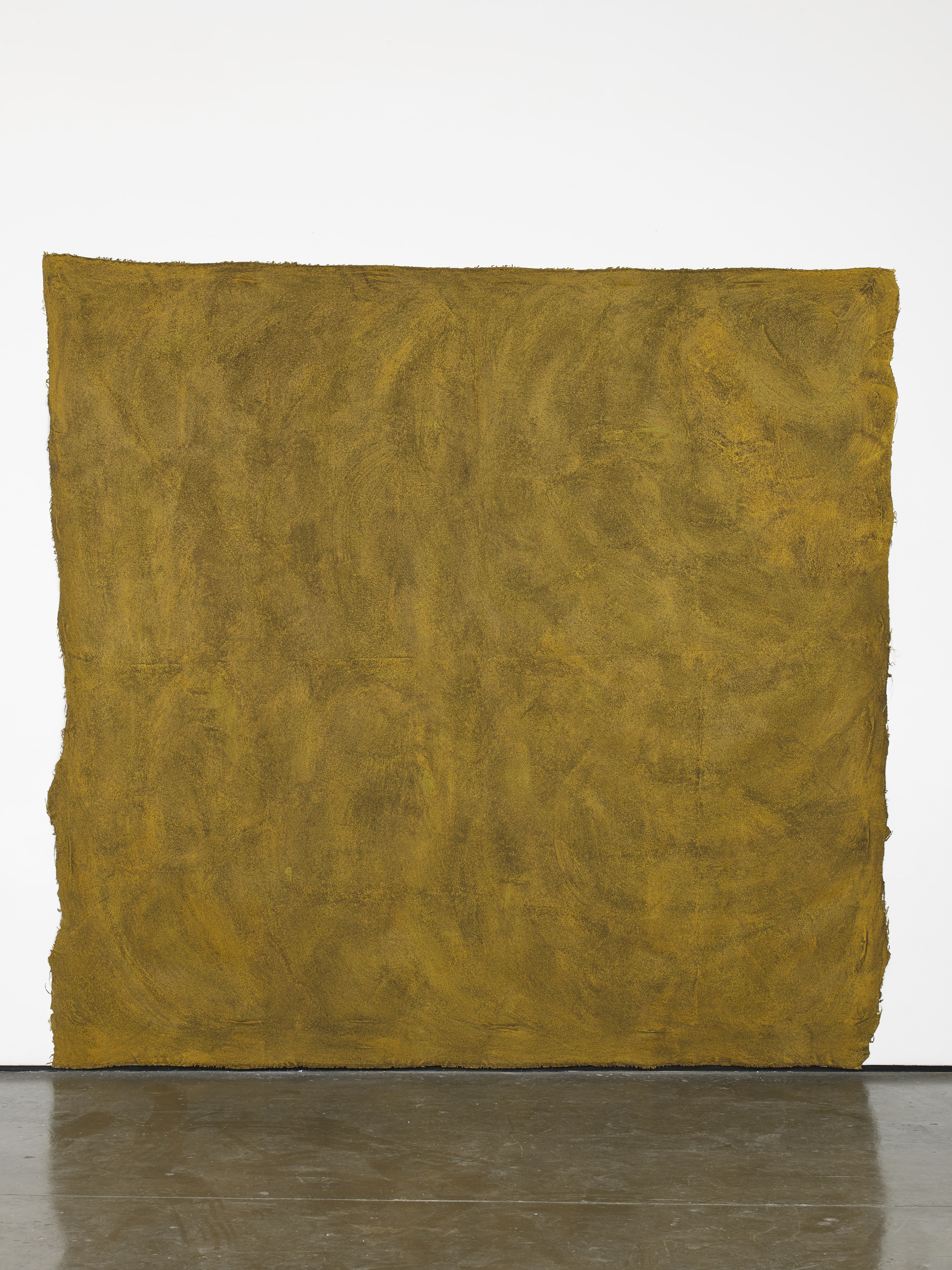


Francis Offman’s paintings are pure abstract compositions. Each one is constructed by the elements that define traditional painting: colours, lines, planes, scales, shapes and forms. The formation of the abstract image follows an unknown scheme devoid of any symbolism. All the canvases are presented very carefully: they are directly pinned onto the wall, unstretched, open and unprotected, exposing their borders to the viewer. This mode of presentation gives vulnerability to the work, a very human aspect to it. And humanity seems to be an overarching theme to this work.
The paintings retain a certain degree of roughness, a memory of a physical encounter with the materials. They include experimentation with acrylic, plaster, ink, cotton, chestnut paper, coffee. Longer pieces of paper are torn and glued on the surfaces creating a visual contrast between the planes. Suddenly a vivid blue, an acid green, a bright pink emerge. Patches of white situated within the corners of the paintings create a dialogue with the walls, a continuation between canvases and exhibition space. These colourful works all belong together and could be pieced together like a puzzle. They refer to an emotional sphere, where sometimes, feelings cannot be pieced together anymore.
The works are all untitled, all equally important, underlining a mode of making art that is organic, intuitive and spontaneous. Not giving titles to the works also creates greater freedom of interpretation for the viewer. It’s a gift from the artist: the possibility of making each work close to you. Untitled 2020 is a large yellowish canvas with brown tears and rips. The yellow looks like a wash, applied in a thin layer with great gestures. That same brown of the tears is also used in the borders of the work. Yet the presence of a piece of textile disrupts any constricted rule on framing. The canvas reminds me of heavy summer rain in familiar places, of rain in unknown landscapes, the softness of certain animal skins or the roughness of a worn fabric. It can be anything and nothing at all, a pure play of abstract elements.
Throughout the show one feels the involvement of Offman’s body. His physicality shapes the formation of each canvas. In the large earthly monochrome Untitled 2019, one feels his gestural circular movements, the repetition of the gestures, ultimately the physical endeavour of making. In her book Second Place, Rachel Cusk describes the feeling of an exhibition she visits; “the phrase that came out of L’s paintings and spoke itself clearly to me. It was: I am here.” Similarly, Offman’s paintings iterate his subtle and fierce presence. Offman has the capacity to transfer his emotions in his abstract yet expressive canvases.
There is an interview where Offman says he was influenced, amongst others, by the American artist David Hammons. Offman underlines that his influence is not in the way the works are made (complex installation, performances), but in the ways the works are conceptualised. Hammons is highly relevant in the history of American art and situates complex work within the “experience of being an outsider, whether an artist, a stranger, a madman, or, most persistently, a person of color.”
Offman grew up in Rwanda before moving to Italy and this experience shapes the power of his art. Critic Davide Ferri, writing on Offman’s work mentions how it was artist Luca Bertolo who introduced him to Offman and underlined “that biographical notes and works should be kept at a proper mutual distance.” I understand this level of care when writing about Offman. Yet when Ferri says “these pieces of paper refer to entering the composition like rips or wounds” I cannot help myself linking work, events and persona. In a recent interview Offman said: “I completely lost any interest in drawing the human figure” and explains “after the things I have seen in Rwanda and what humans are capable of.”
Representation and trauma are somehow connected, the figurative world disappears. Instead, one prefers the openness of an abstract canvas, the freedom it gives, the imaginary spaces it inhabits. The show is an ode to our humanity.
Ilaria Puri Purini
Curator of Programmes
Herald St Museum St, 43 Museum St, WC1A 1LY. Open Tuesday-Friday 11.00-18.00. Exhibition continues until 16 July 2021. www.heraldst.com